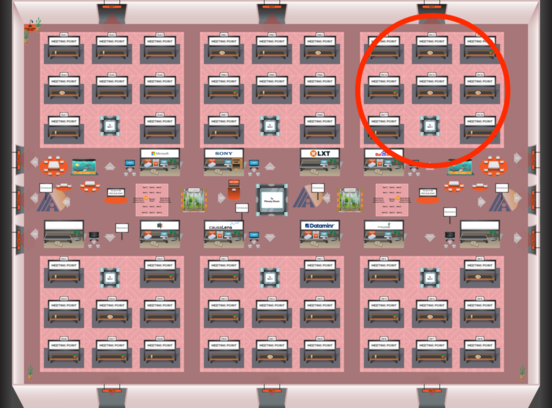Learning Auxiliary Monocular Contexts Helps Monocular 3D Object Detection
Xianpeng Liu, Nan Xue, Tianfu Wu
[AAAI-22] Main Track
Abstract:
Monocular 3D object detection aims to localize 3D bounding boxes in an input single 2D image. It is a highly challenging problem and remains open, especially when no extra information (e.g., depth, lidar and/or multi-frames) can be leveraged in training and/or inference.
This paper proposes a simple yet effective formulation for monocular 3D object detection without exploiting any extra information. It presents the MonoCon method which learns Monocular Contexts, as auxiliary tasks in training, to help monocular 3D object detection.
The key idea is that with the annotated 3D bounding boxes of objects in an image, there is a rich set of well-posed projected 2D supervision signals available in training, such as the projected corner keypoints and their associated offset vectors with respect to the center of 2D bounding box, which should be exploited as auxiliary tasks in training.
The proposed MonoCon is motivated by the Cram\`er–Wold theorem in measure theory at a high level.
In implementation, it utilizes a very simple end-to-end design to justify the effectiveness of learning auxiliary monocular contexts, which consists of three components: a Deep Neural Network (DNN) based feature backbone, a number of regression head branches for learning the essential parameters used in the 3D bounding box prediction, and a number of regression head branches for learning auxiliary contexts. After training, the auxiliary context regression branches are discarded for better inference efficiency. In experiments, the proposed MonoCon is tested in the KITTI benchmark (car, pedestrian and cyclist). It outperforms all prior arts in the leaderboard on the car category
and obtains comparable performance on pedestrian and cyclist in terms of accuracy. Thanks to the simple design, the proposed MonoCon method obtains the fastest inference speed with 38.7 fps in comparisons.
This paper proposes a simple yet effective formulation for monocular 3D object detection without exploiting any extra information. It presents the MonoCon method which learns Monocular Contexts, as auxiliary tasks in training, to help monocular 3D object detection.
The key idea is that with the annotated 3D bounding boxes of objects in an image, there is a rich set of well-posed projected 2D supervision signals available in training, such as the projected corner keypoints and their associated offset vectors with respect to the center of 2D bounding box, which should be exploited as auxiliary tasks in training.
The proposed MonoCon is motivated by the Cram\`er–Wold theorem in measure theory at a high level.
In implementation, it utilizes a very simple end-to-end design to justify the effectiveness of learning auxiliary monocular contexts, which consists of three components: a Deep Neural Network (DNN) based feature backbone, a number of regression head branches for learning the essential parameters used in the 3D bounding box prediction, and a number of regression head branches for learning auxiliary contexts. After training, the auxiliary context regression branches are discarded for better inference efficiency. In experiments, the proposed MonoCon is tested in the KITTI benchmark (car, pedestrian and cyclist). It outperforms all prior arts in the leaderboard on the car category
and obtains comparable performance on pedestrian and cyclist in terms of accuracy. Thanks to the simple design, the proposed MonoCon method obtains the fastest inference speed with 38.7 fps in comparisons.
Introduction Video
Sessions where this paper appears
-
Poster Session 6
 Sat, February 26 8:45 AM - 10:30 AM (+00:00)
Sat, February 26 8:45 AM - 10:30 AM (+00:00)
 Red 3
Red 3
-
Poster Session 10
 Sun, February 27 4:45 PM - 6:30 PM (+00:00)
Sun, February 27 4:45 PM - 6:30 PM (+00:00)
 Red 3
Red 3
